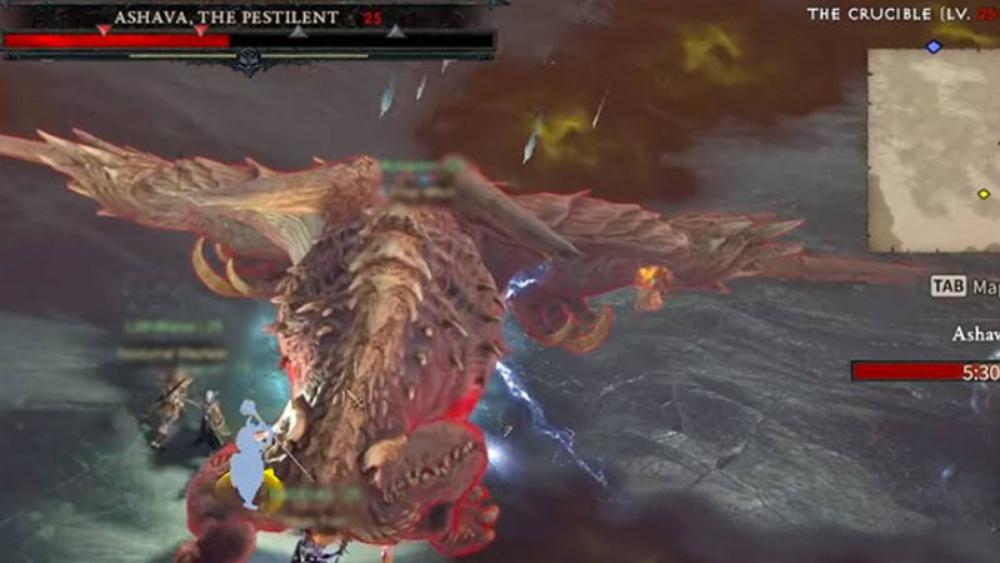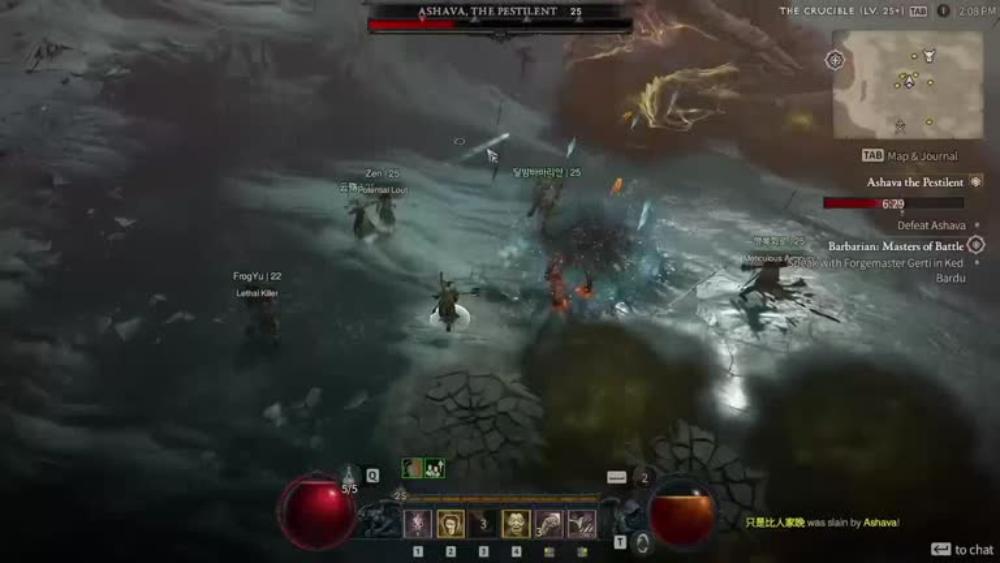Physical Address
304 North Cardinal St.
Dorchester Center, MA 02124
Physical Address
304 North Cardinal St.
Dorchester Center, MA 02124

Hey, fellow adventurers! Are you ready to learn a secret technique that will give you the upper hand against the mighty bosses of Diablo 4? Well, get ready to embrace the power of Stagger! In this article, we’re going to dive deep into the Stagger mechanic and how you can use it to your advantage when facing off against colossal foes like Ashava. Stagger is no joke, my friends, and it’s not just limited to a specific class or skill tree. Whether you’re a seasoned Sorcerer or a hardened Barbarian, you can unleash the force of Stagger. So, let’s not waste another moment and discover the secrets of this incredible technique.

Staggering in Diablo 4 is a unique combat mechanic that allows players to temporarily disable powerful enemies, such as world bosses and story bosses. By filling up the yellow bar beneath a boss’s HP, you can trigger a “downed” status, indicated by a rapidly decreasing blue bar. When a boss is downed, it becomes vulnerable and unable to retaliate, giving you the perfect opportunity to unleash devastating attacks and deal massive damage.
During the Early Access and Open Beta, players had the chance to stagger the world boss Ashava, causing it to break its right forearm claw. While the specific breakable parts may vary in future world bosses, the mechanic of staggering is likely to remain, offering an exciting gameplay element and potentially influencing the boss’s attack patterns. Get ready to unleash your ultimate abilities and crush your enemies while they’re down.

In Diablo 4, players have the opportunity to stagger big bosses using the Stagger combat system. To do this, you need to fill up the Stagger Bar located below the boss’s health bar. The Stagger Bar can be filled by unleashing crowd-control skills on the boss, such as freezing or slowing them down. It’s important to note that World Bosses cannot be crowd-controlled in the traditional sense, as Blizzard wanted to avoid making the fights too easy. However, the Stagger system provides a way to incorporate crowd control in a balanced way. Working together with other players, using crowd-control effects collectively can fill up the Stagger Bar more quickly. Once the Stagger Bar is completely filled, the boss becomes staggered, falling to the ground. This presents a perfect opportunity for players to unleash their attacks without worrying about retaliation.
The stagger bar in Diablo 4 is located just below the health bar of the World Boss. It is a distinct bar that fills up as Crowd Control (CC) effects are applied to the boss. The bar is usually represented by a different color, such as gold or yellow, to differentiate it from the health bar. When the stagger bar is completely filled, the World Boss becomes temporarily helpless for a duration of 12 seconds. This provides a valuable opportunity for players to unleash their most devastating attacks and deal massive damage. Additionally, each World Boss in the game has its own unique mechanic associated with staggering. For example, when the Ashava World Boss is staggered, one of her arm blades breaks permanently, making her weaker and altering the dynamics of the fight.
The Staggering effect lasts for 12 seconds, during which the boss is unable to fight back, similar to a stun. This period is visually represented by a green bar. Each boss in the game has unique staggering effects. For instance, in the case of Ashava, one blade on her front arm breaks when staggered, weakening her for the remainder of the fight. Players can take advantage of this vulnerability to unleash powerful attacks.
You may also be interested:

The Staggering system introduces a new way to approach boss battles, ensuring that crowd control effects have a meaningful impact without making the fights too easy. Take Ashava, the world boss, as an example. During the battle, a thin gold-colored bar called the stagger bar appears beneath the boss’s health bar. Whenever players use attacks with crowd control effects like stuns, freezes, or chills, the stagger bar starts to fill up. Once the bar is completely filled, Ashava becomes staggered, resulting in a devastating injury that significantly weakens the boss for the remainder of the fight. As it was mentioned, this allows players to strategically incorporate their control effects and unleash powerful attacks during the vulnerable staggered phase, adding an exciting layer of gameplay dynamics to the boss encounters in Diablo 4.

Each boss has its own unique injury that occurs when players fill their stagger bar. This injury can greatly impact the boss’s abilities and behavior during the fight. This changes the dynamics of the battle, making previously dangerous areas of the battlefield safer for players. Additionally, if Ashava is staggered multiple times, both arm blades can be broken, further altering the remainder of the fight.
The Staggering system in Diablo 4 introduces a new combat mechanic that adds depth and strategy to battles against big enemies, such as World Bosses. By filling the stagger bar through the use of crowd control effects, players can temporarily render these formidable foes helpless for a limited time, allowing for focused attacks and increased damage output. Each World Boss has a unique injury or mechanic associated with staggering, which further impacts their abilities and behavior in the fight. This mechanic adds an exciting layer of gameplay dynamics, requiring players to carefully time and coordinate their crowd control skills to maximize their effectiveness. While the exact details and effects may vary for each boss, the staggering system provides an engaging and impactful way to approach boss encounters in Diablo 4. Prepare yourself for epic battles and make the most of the opportunities that staggered bosses provide to conquer the challenges of the Burning Hells.